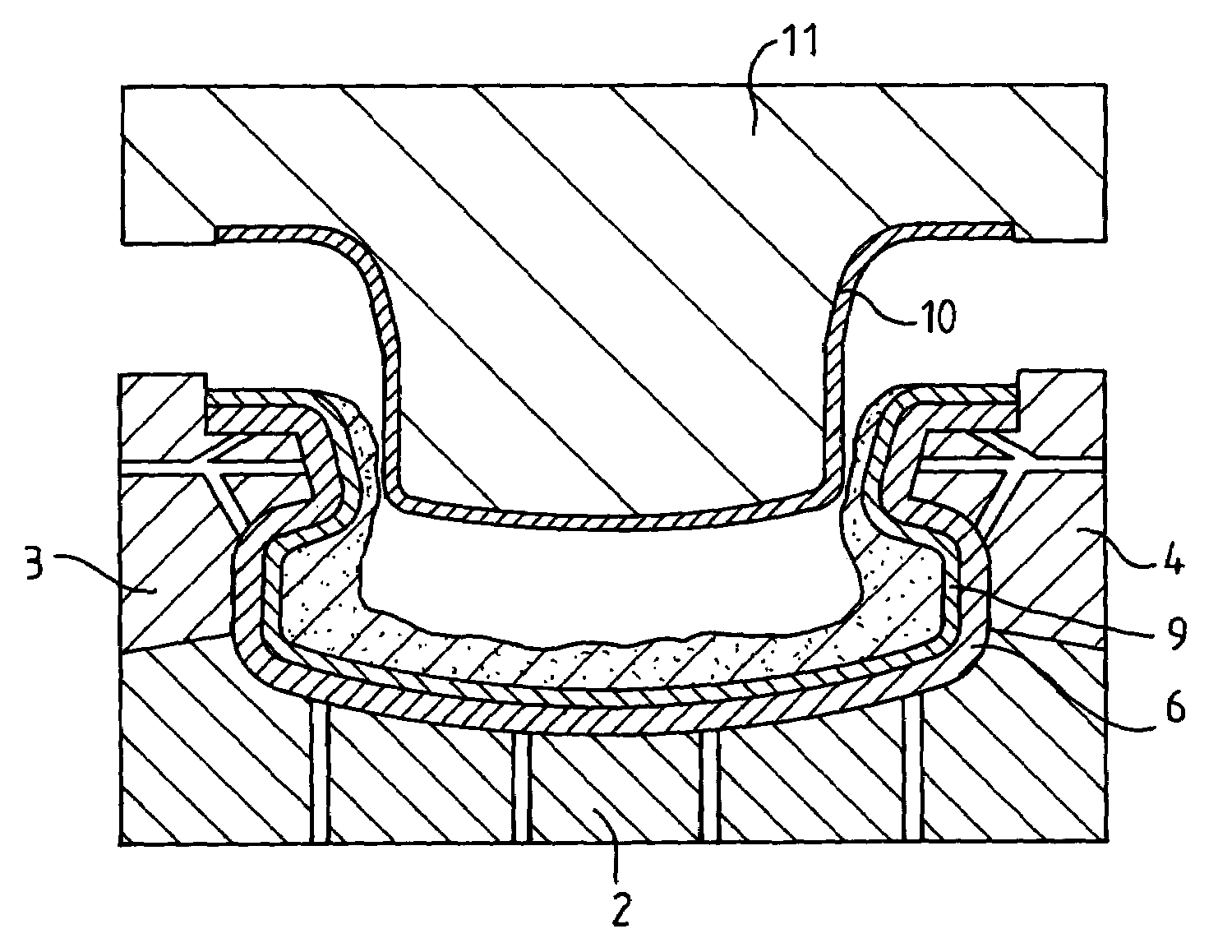Method and mould for manufacturing a moulded article comprising at least an elastomeric polyurethane skin
a technology of elastomeric polyurethane and moulding, which is applied in the field of manufacturing a moulded article, can solve the problems of not qualitatively showing the article, unable to mould the entire article, and still limited design freedom, so as to achieve similar design freedom
- Summary
- Abstract
- Description
- Claims
- Application Information
AI Technical Summary
Benefits of technology
Problems solved by technology
Method used
Image
Examples
Embodiment Construction
[0020]In general, the present invention provides a new method for manufacturing moulded articles which comprise an elastomeric polyurethane skin intended to form the front side of the article. The moulded articles are for example interior trim parts of automotive vehicles such a dashboards or instrument panels, door covers, consoles and glove compartments. In addition to the polyurethane skin, they usually contain a structural backing layer or rigid carrier which may be united either directly to the back of the skin or through the intermediary of a foam layer in order to achieve a soft touch.
[0021]In practice, the interior trim parts are often to be produced in moulds comprising slides, or in other words mutually movable mould sections, as a result of the complex shape of the trim parts and especially the presence of undercuts. When traces or imprints of the seams between the mutually movable mould sections are to be avoided on the visible side of the trim part, the skin was hithert...
PUM
| Property | Measurement | Unit |
|---|---|---|
| density | aaaaa | aaaaa |
| density | aaaaa | aaaaa |
| thickness | aaaaa | aaaaa |
Abstract
Description
Claims
Application Information
 Login to View More
Login to View More - R&D
- Intellectual Property
- Life Sciences
- Materials
- Tech Scout
- Unparalleled Data Quality
- Higher Quality Content
- 60% Fewer Hallucinations
Browse by: Latest US Patents, China's latest patents, Technical Efficacy Thesaurus, Application Domain, Technology Topic, Popular Technical Reports.
© 2025 PatSnap. All rights reserved.Legal|Privacy policy|Modern Slavery Act Transparency Statement|Sitemap|About US| Contact US: help@patsnap.com



